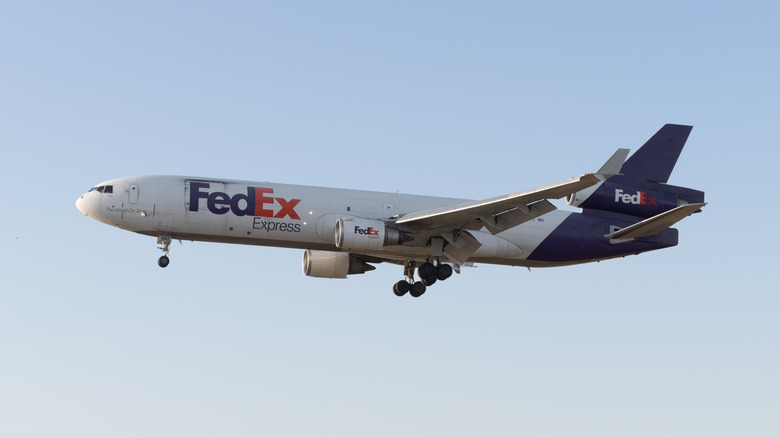
Angel Di Bilio/Getty Images
In decades gone by, air travel was very exclusive indeed. In the late 1920s and the beginning of the commercial flight boom, two round-trip tickets for a flight across the United States cost as much as a new car at the time. Today, the Federal Aviation Administration figures report that around 2.9 million people embark on flights every single day in the United States alone.
Airplane journeys, whether for business or pleasure, have become more common as air flight has become available to more people. The rise of jet airliners was part of the driving force of this change. The Douglas DC-8, one of the very first jet airliners, helped to pave the way and would be superseded by another very significant model: McDonnell Douglas’s DC-10.
The DC-10 has over half a century of fascinating history, incorporating a battle against a true giant, tragic accidents, and the re-establishment of the plane’s reputation. Here’s the story of this well-known jet from the beginning.
The concept of the McDonnell Douglas DC-10
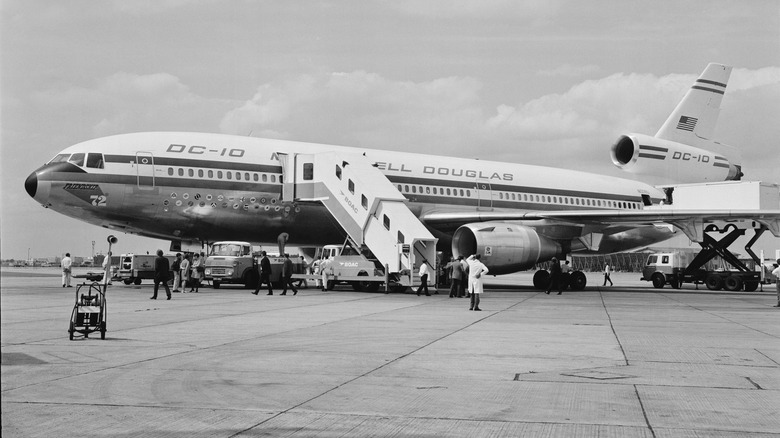
George Stroud/Getty Images
The iconic jumbo that is the Boeing 747, which was introduced in early 1969, played an appropriately enormous part in opening up jet travel to the people of the era. However, just as the largest cruise ships can’t fit in every port, every airport runway couldn’t accommodate the 747’s ample frame. To address this, the time called for mid-size aircraft that weren’t as restrictively large as the jumbo but could still carry many passengers.
McDonnell Douglas’s DC-10 arose from airlines’ attempts during the 1960s and 1970s to find ways to fly as many people to as many different places as possible, as practically as possible. The McDonnell and Douglas companies combined in 1967 and set about creating an aircraft that could accomplish just that. The Douglas DC-8 Super 60’s size would be created (the Super 60 is approximately 187 feet and 5 inches long), and it would be a widebody jet.
The standard DC-8, by contrast, had been a single-aisle aircraft. The DC-10 debuted with American Airlines in August 1971. Internally, too, it took inspiration from the DC-8 models that came before, but there was no denying it was its own machine, fulfilling airlines’ needs for a mid-sized jet.
What the McDonnell Douglas DC-10 could do
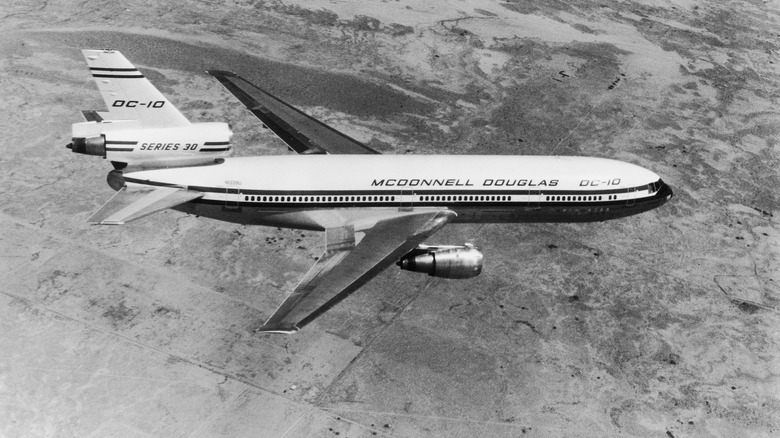
Apic/Getty Images
The original model of the tri-jet DC-10 featured three GE CF6-6D engines, which propelled it to an operating range of around 6,500 km with 177.92 kN of thrust. The one-size-fits-all approach can be difficult to adhere to in the world of aviation. Particularly when the goal is to reach new distances and markets (thereby expanding your potential market share and customer base).
McDonnell Douglas then issued variants on the DC-10 that could go the distance. The DC-10-10 model was followed by the DC-10-30 and DC-10-40 models, both of which had dramatically improved range and some performance tweaks. The 30 had the greatest range, at an astonishing 9,600 km, and could carry the largest payload at 46,180 kg while maintaining the same weight and very similar dimensions as the rest of the family.
The difference was its power source: the DC-10-30 boasted improved GE CF6-50C engines, while the final 10-40 variant was equipped with Pratt & Whitney’s JT9D-59A instead (a model that also powered none other than Boeing’s 747). Capable of up to 544 mph, the DC-10 was well-equipped for flights across the United States and beyond, as intended. However, some tragic accidents in the early period of its life would have a profound effect, much like the tragedy that would also doom the Concorde.
A reputation tarnished by tragedy
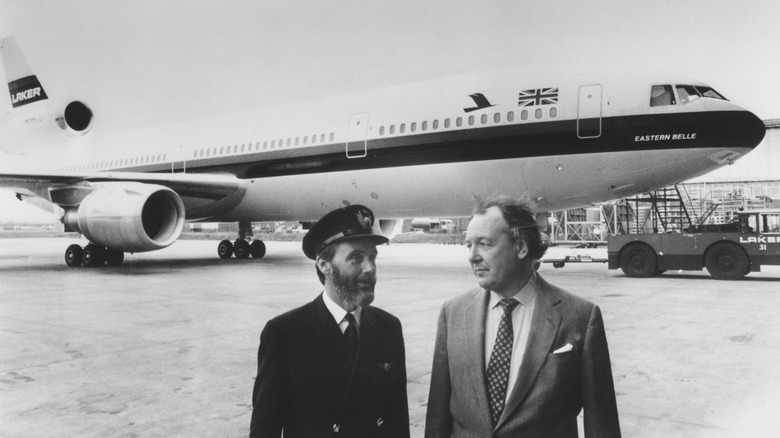
Keystone/Getty Images
The May 1979 tragedy of American Airlines Flight 191 remains the United States’ deadliest plane crash. The disaster occurred when an engine fell away from the aircraft as it was taking off from O’Hare International Airport, resulting from undetected issues following prior work on the aircraft’s engines. A total of 273 people were killed when the aircraft couldn’t be brought back under control and crashed 31 seconds into take-off. Flight 191 was a DC-10-10, and sadly, wouldn’t be the only one lost in such a disaster.
In November of that same year, Air New Zealand’s Flight TE901, another DC-10, crashed into Mount Erebus during an aerial tour of Antarctica. This tragedy, reportedly resulting from difficult conditions and confusion with the flight path provided by the instruments, resulted in 257 deaths. Such disasters contributed to a negative outlook on the DC-10 early in its life, to the extent that the model had to stop being manufactured in 1988.
Though maintenance work and the release of subsequent models in the DC-10 family aimed to address problems such as faults with the electric actuator used in the cargo doors, there’s no doubt that the family’s image in the industry would have been adversely affected by these awful events. Nonetheless, various takes on the DC-10 were released.
The lifespan of the McDonnell Douglas DC-10
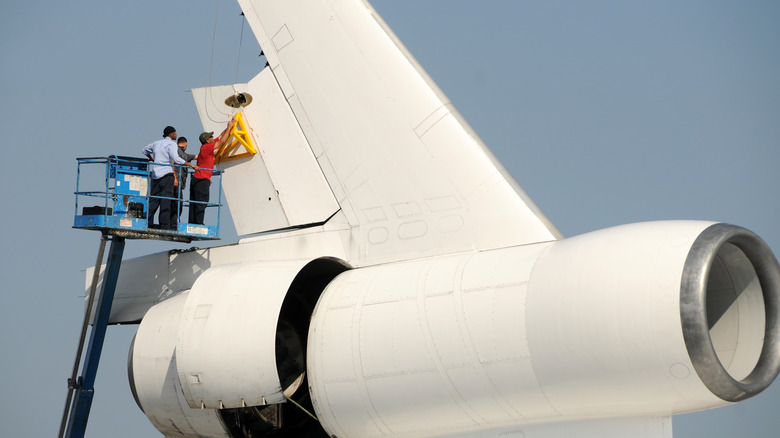
Icholakov/Getty Images
The DC-10, a relatively slimline long-range jet, was a popular pick for more than just passenger-ferrying. Further expanding the range of variants of the family, 1996 saw the introduction of what became known as the MD-10. That year, the Boeing Converted Freighter (BCF) initiative began a program of modifications to DC-10-10s and DC-10-30s to create more advanced freight aircraft that utilized Advanced Common Flightdeck and other technology.
MD-10s would deliver freight across FedEx’s network until the model’s final flight in that capacity in December 2022. At that point, it had been five years since the DC-10’s last scheduled journey with passengers aboard (that being with Bangladesh Biman Airlines in December 2017).
Northwest itself stopped flying the aircraft in January 2007, the last big American airline to do so. Aside from delivering freight and travelers alike, it has also played a decades-long role in the United States Air Force (McDonnell Douglas having created such famed military aircraft as the F-4 Phantom II). This variant, Boeing Company’s KC-10 Extender, began supporting and refueling the U.S. Air Force’s aircraft in 1981, continuing to do so through Operation Desert Storm, Operation Noble Eagle, and beyond. As of 2014, 59 KC-10s were in active service.
The DC-10, dogged by tragedy as its early life was, would be widely used around the United States and beyond during its run (Japan Air Lines also employed the Series 40 model) and in a wide range of different roles to boot.